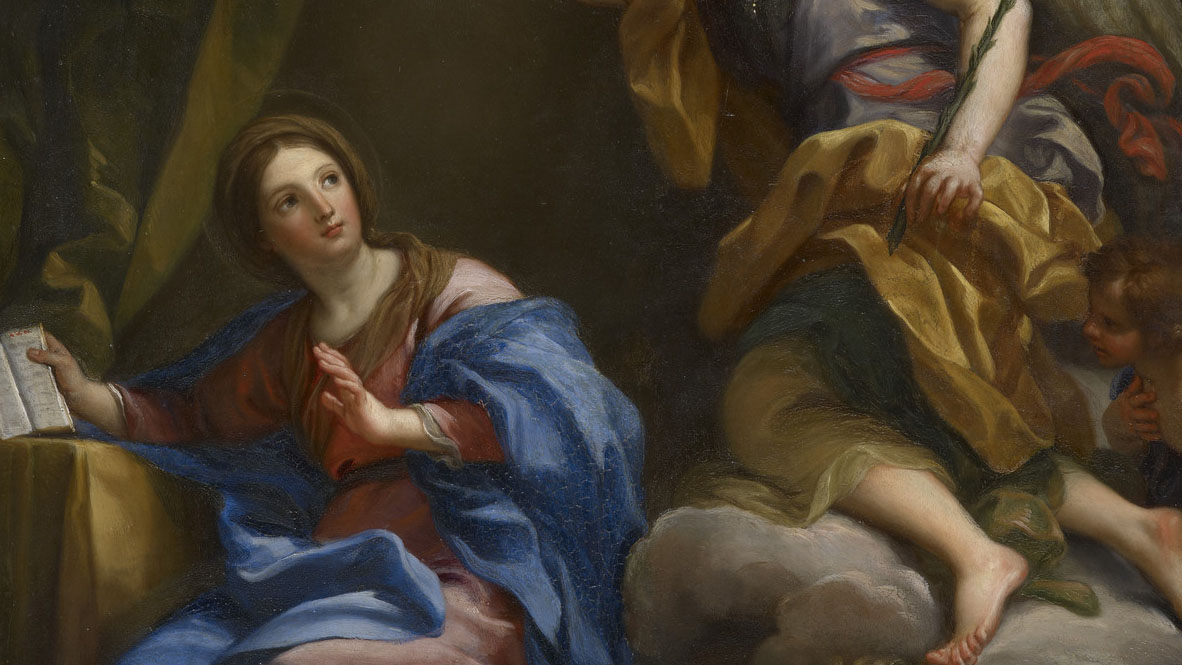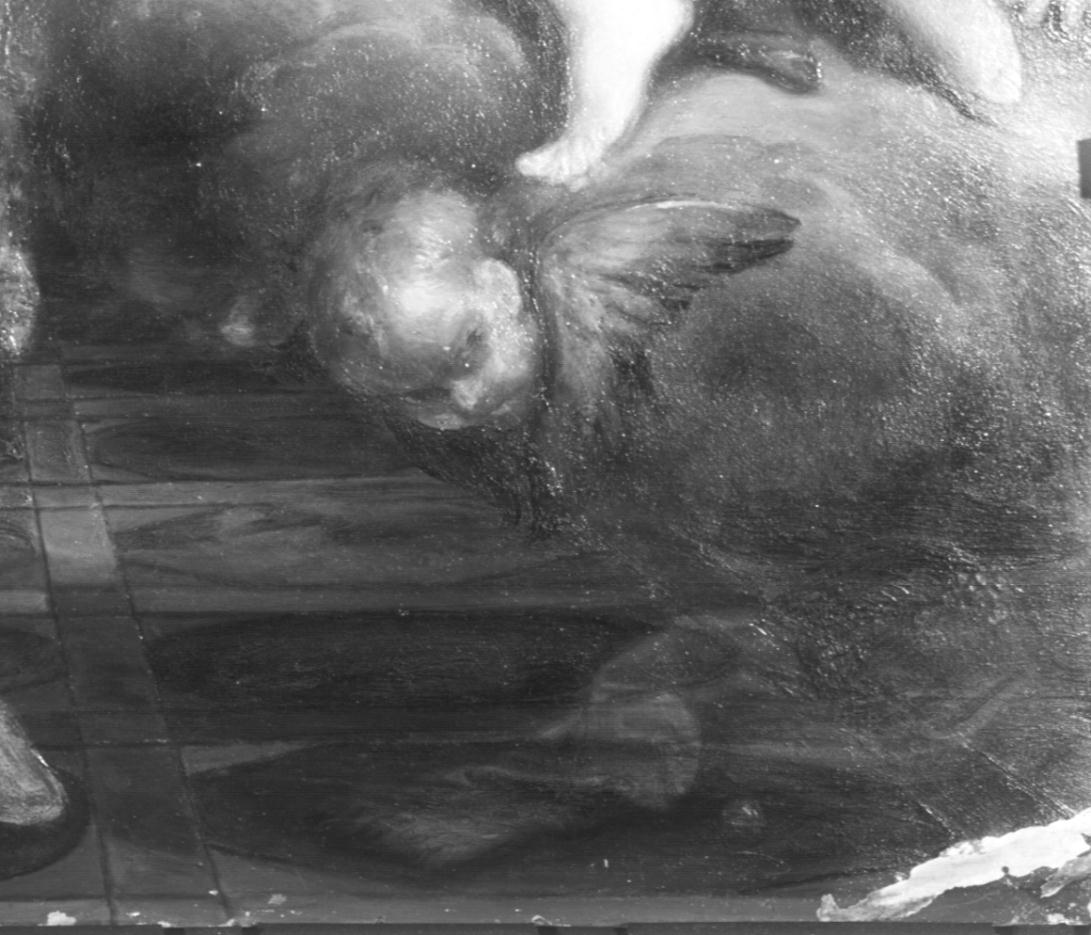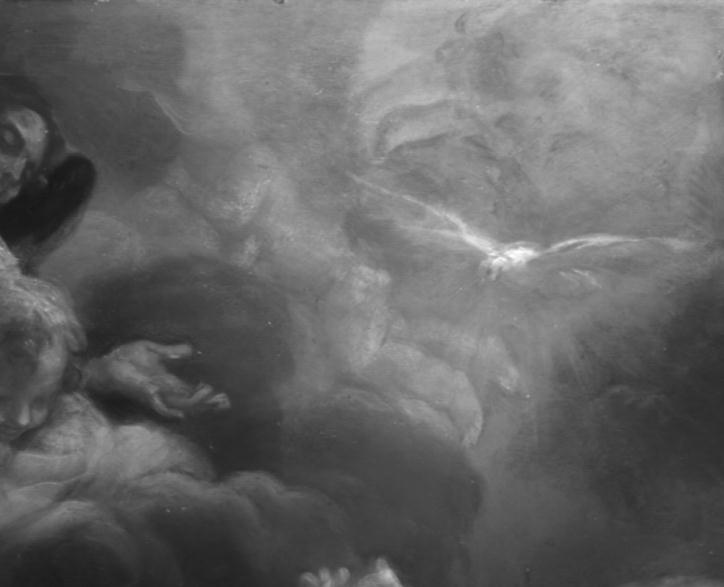
Conserving Maratti's 'The Annunciation'
Treatment was needed before the First Georgians exhibition
Understanding the composition
The process of determining Maratti's original intentions in the lost areas was helped by a handful of documentary sources, principally an engraving by R. van Audenaerde (d.1743), shown left. Although not totally accurate, it informed the context of the remaining fragments of floor tiling and what was left of the Virgin's foot.
Other clues for the retouching stage came from other versions of the painting, including versions at the Hermitage, St Petersburg and Fano, Pinacoteca Civica, which are similar but not identical.
The other versions were also valuable in shedding light on how Maratti developed the Annunciation composition.
When the Royal Collection painting was examined using Infrared reflectography, a number of changes to the composition at an earlier stage in the painting process were revealed.
For instance, originally Maratti had painted the Virgin's blue drapery across her left knee, which is how it is seen in the Hermitage and Fano versions.
However, at a later stage, he changed the composition by painting over some of the blues with the red drapery that is visible now, but they are evident in the infrared reflectograph.
Originally, Maratti had painted a putto in the sky, identical to that in the Fano version, towards the upper left of the composition.
He painted this out at a later stage, but it remains visible with infrared, shown below. Here the legs of the putto can be seen below the body of the dove, with his body running diagonally, parallel to the figure on the left.
Another significant change was the sewing basket at the lower right corner. Again this is visible in both the Hermitage and Fano versions.
As with the putto, Maratti painted it in the Royal Collection version and then later changed his mind and painted it out.
It remains partially visible with the naked eye, although infrared light confirmed the presence of a pair of scissors and a ball of string at the lower edge, which can just about be made out in the image shown below.









